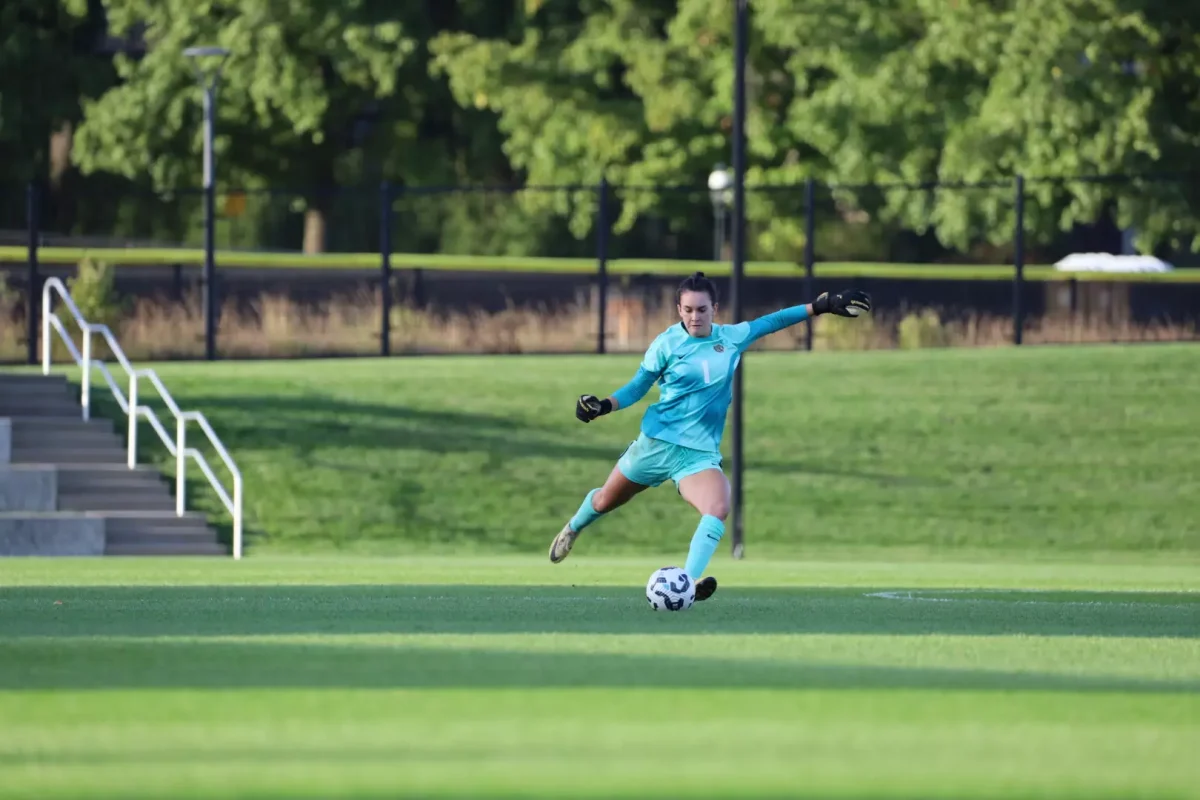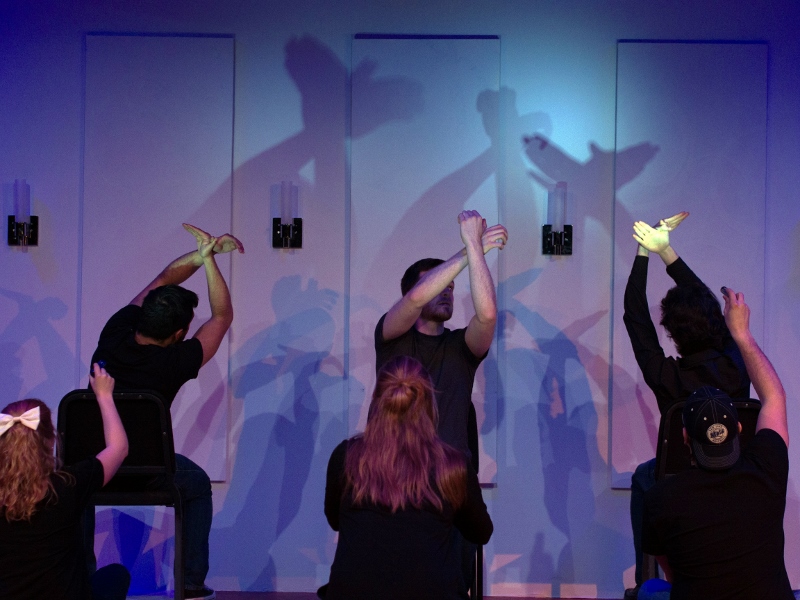One of the least helpful words in the English language is “interesting.” Yet no other word more perfectly described “Flux on the Fringe,” as it tears back the proverbial curtain on the process of creating the very play it is putting on.
The Lafayette College Theater Department is currently putting on a duology of shows entitled “Faith on the Fringe.” Although the second part of this project, Woody Allen’s “God,” premiered too late for the purposes of this review (written Wednesday night), the first part, entitled “Flux on the Fringe,” is a ringing endorsement of both the Theater Department’s abilities and imagination. If “God” features one-third of the raw talent and imagination that “Flux on the Fringe” displays, it is a must-see.
The play, organized with the help of the professional Flux Theater Ensemble, takes place in a rehearsal studio during the course of three meetings of the THTR 375 class as they grapple with analyzing the play “Tartuffe.” They debate and analyze the roles of class and religion in their lives, how and what they believe, and how they view the beliefs of others, all while struggling to prepare the very play they are the subjects of.
This is an effort that could very easily go wrong. That “Flux on the Fringe” is a coherent play is impressive in itself, considering what they are attempting. That it is truly great is nothing short of a miracle, one born of the hard work and dedication of the writers, directors and actors.
The intimacy of a black box theater tends to bring out the best in performers. The ensemble cast of Luis Aviles ‘17, Kristin Curley ‘16, Scott Kovacs ‘16, Ethan Simmons ‘18, Hannah Weaver ‘17, and Gavin Knox ‘17 lacked neither enthusiasm nor effort. It is impossible to highlight a standout in a cast that worked together so well. Actors and actresses were each able to stand on their own, steal the show in their scene and then step aside in order to not upstage the others.
The beautiful choreography that punctuated the more philosophical and theological musings, also done by Kristin Curley ‘16, gave an almost ethereal beauty to portions of the show. The greatest weakness of the choreography is that it feels as though there is too little of it.
Indeed, that is probably the single reasonable flaw to be found in “Flux on the Fringe”: it feels too short. Although the discussions on the nature of religion are fascinating and deep, the students felt like they had more to say on their points of view. Although I understand how challenging this show must have been to make and perform in so well, the discussion felt as though it could easily have gone deeper than musings in Theology 101. Extending it may have damaged the perfection of the brevity of the play, but it would have made for a more rewarding and rigorous intellectual experience for the audience.
The only other misstep was putting “Flux on the Fringe” on Wednesday and Friday while leaving “God” for Thursday and Saturday. Perhaps upon seeing “God” I will understand why they chose to show the two parts of “Faith on the Fringe” on separate days, but, as it stands, “Flux on the Fringe” seems short enough to follow-up with “God” on the same day and not dramatically impact the time commitment of the audience.
Mostly, though, when the only flaw that exists in a play is that you were upset that it stopped, it is by definition an exceptional production. Thought-provoking, genuine, beautiful and remarkably well-performed, “Flux on the Fringe” is a fantastic way to end the 2015-2016 season.





















































































































